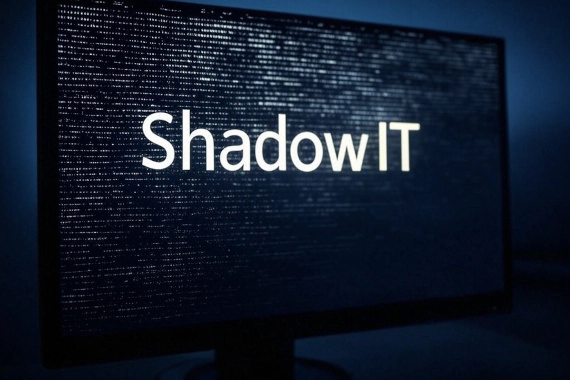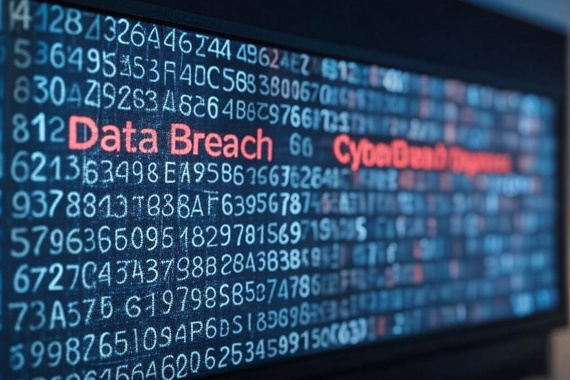
Creating a Shadow IT Policy: A Step-by-Step Guide
What is shadow IT and why is it a problem? Shadow IT refers to software that employees use for work without the …

FACT: The average cost of a data breach reached an all-time high of $4.88 million, marking a 10% increase over last year.
From small businesses to Fortune 500 companies, no organization is immune to the threat of unauthorized data access.
Understanding how data breaches happen, how to respond, and your regulatory requirements is essential for any organization that handles sensitive data.
But before that, let’s define what a data breach is.
A data breach is a security incident that enables unauthorized access to sensitive information.
These attacks can range from accidental exposures due to human error all the way to sophisticated attacks orchestrated by nation-state actors.
Attacks have become increasingly complex, often involving multiple attack vectors such as phishing attacks, malware infections, or exploiting software vulnerabilities.
The scope of a data breach can vary significantly, from small-scale incidents affecting a handful of records to massive compromises impacting millions of individuals.
Common types of exposed information include personally identifiable information (PII) such as social security numbers, credit card details, and healthcare records, as well as corporate data like trade secrets, customer databases, and financial statements.
While cybersecurity discussions often focus on malicious attacks, it’s important to understand that data breaches can occur through various other means.
Stolen devices, documents disposed of improperly, and misconfigured security settings can all lead to unauthorized data exposure as well.
Understanding the most common attack vectors is crucial to properly defend against these attacks.
To effectively prevent attacks, organizations need to understand the most common attack vectors that lead to unauthorized data access. Here’s a list of the most common root causes:
As data breaches become more common, governments and regulatory bodies have responded with increasingly stringent requirements for data protection and breach notification.
Understanding these regulations is crucial for any organization that handles sensitive data.
One of the most well-known regulations is the General Data Protection Regulation (GDPR).
The GDPR imposes strict requirements on organizations handling EU residents’ data.
These include mandatory breach notification within 72 hours and potential fines of up to 4% of global annual revenue or €20 million, whichever is greater.
In the United States, organizations must navigate a patchwork of state and federal regulations.
The California Consumer Privacy Act (CCPA) and its successor, the California Privacy Rights Act (CPRA), set strict requirements for businesses handling California residents’ data.
These include mandatory breach notifications and significant penalties for non-compliance.
Beyond geographical regulations, many industries have their own specific standards.
The Health Insurance Portability and Accountability Act (HIPAA) governs healthcare data, while the Gramm-Leach-Bliley Act (GLBA) applies to financial institutions.
The Payment Card Industry Data Security Standard (PCI DSS) sets requirements for organizations handling credit card data.
The Securities and Exchange Commission (SEC) has specific reporting requirements for publicly traded companies.
Organizations often need to comply with multiple overlapping regulations.
This is why a comprehensive compliance program is crucial.
Beyond notification requirements, regulations typically mandate specific security controls, incident response procedures, and documentation.
Companies need to maintain detailed records of what security they have in place, conduct regular risk assessments, and implement technical and organizational controls to prevent data breaches.
When a data breach occurs, having a well-documented incident response plan is crucial for keeping things under control and ensuring regulatory compliance. Here’s a useful checklist when managing the aftermath of a breach:
While properly responding to a breach is crucial, preventing them should be the primary focus.
Despite the common emphasis on user training, technical controls should form the backbone of any effective breach prevention strategy.
Technical controls provide consistent, automated protection that isn’t subject to human error.
Important technical controls that should be in place include:
In addition, organizations need to extend their security focus beyond internal systems to include their entire supply chain.
Continuously monitor your third-party security controls to identify vulnerabilities before they’re exploited.

What is shadow IT and why is it a problem? Shadow IT refers to software that employees use for work without the …

What are the Risks of Shadow IT When it comes to Shadow IT, there are five primary risks that it introduces into …